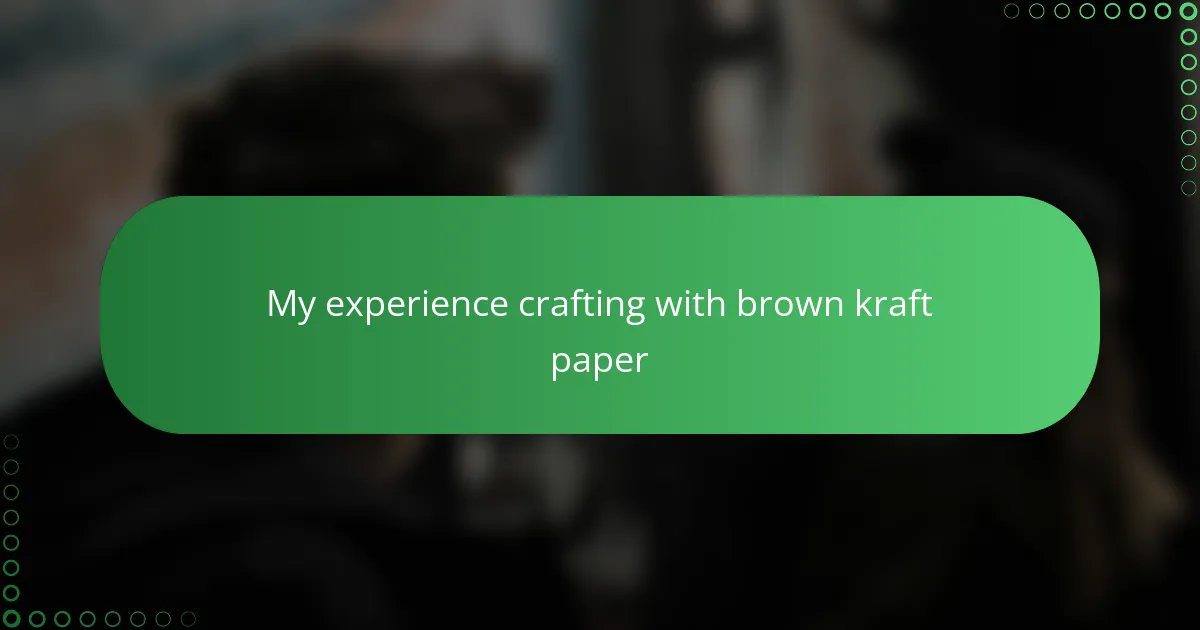Key takeaways
- Brown kraft paper is strong, textured, and eco-friendly, providing a rustic feel for crafting projects.
- Essential tools for working with kraft paper include a sharp craft knife, metal ruler, and strong adhesive for best results.
- Basic techniques like scoring before folding and layering can enhance the quality and visual appeal of kraft paper crafts.
- Embracing kraft paper’s natural texture and simplicity can elevate projects, making them feel authentic and thoughtfully handmade.
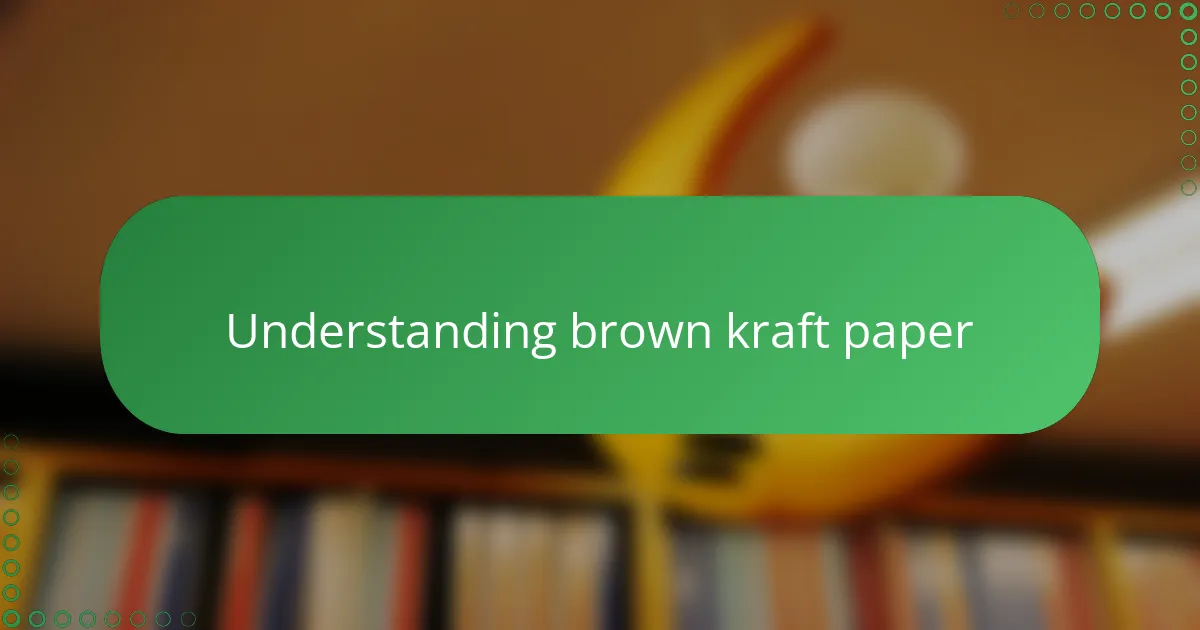
Understanding brown kraft paper
Brown kraft paper has this wonderfully natural, rustic feel that instantly makes any craft project look authentic. When I first worked with it, I was surprised by its sturdy texture—it’s not just any paper but a durable canvas that can handle a bit of rough treatment without tearing. Have you ever wondered why some papers feel so much stronger? That’s because kraft paper is made through a special process called kraft pulping, which retains the natural fibers and gives it remarkable strength.
What I find fascinating is its earthy brown color, which isn’t just a shade—it tells a story of eco-friendliness and simplicity. Using kraft paper feels like connecting with nature, and that connection makes crafting more meaningful. It’s this tactile quality and subtle warmth that keep me coming back to it, even when other materials are tempting.
The texture itself invites creativity; it absorbs inks and paints in a way that adds character rather than masks the surface. Have you noticed how designs on kraft paper seem to pop with a unique vibrancy? This paper has a personality that transforms simple crafts into something rich and inviting, and that’s why it holds a special place in my crafting arsenal.
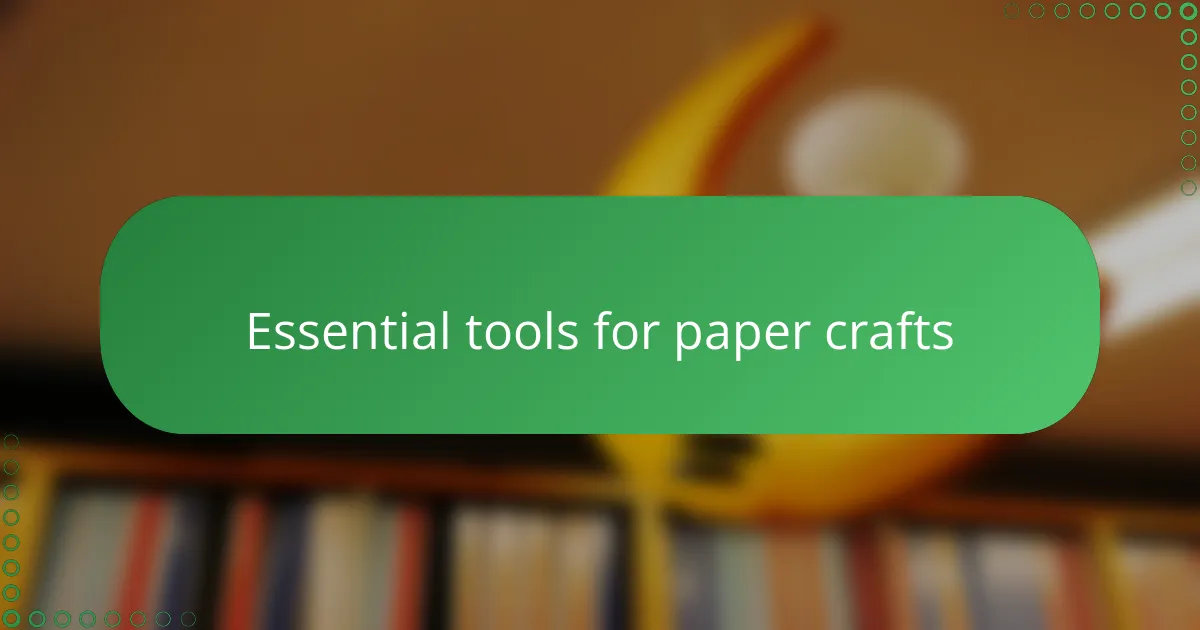
Essential tools for paper crafts
When I dive into crafting with brown kraft paper, I quickly realize that having the right tools makes all the difference. A sharp craft knife is my go-to for precise cuts—there’s nothing like that satisfying clean edge on such sturdy paper. Have you ever tried cutting thick paper with dull scissors? It’s frustrating, and the kraft paper deserves better care.
Another essential in my kit is a reliable ruler, preferably metal. I learned this the hard way after bending the edges of my paper while trying to measure with a flimsy plastic one. The metal ruler not only gives me accuracy but also acts as a guide to keep those cuts straight and professional-looking.
Finally, I can’t skip on an adhesive that works well with kraft paper’s rough texture. Glue sticks often feel too weak for the job, so I usually reach for a strong tacky glue—it holds the fibers firmly without warping the paper. What’s your go-to adhesive for heavier papers? For me, this little detail can make or break the entire project.
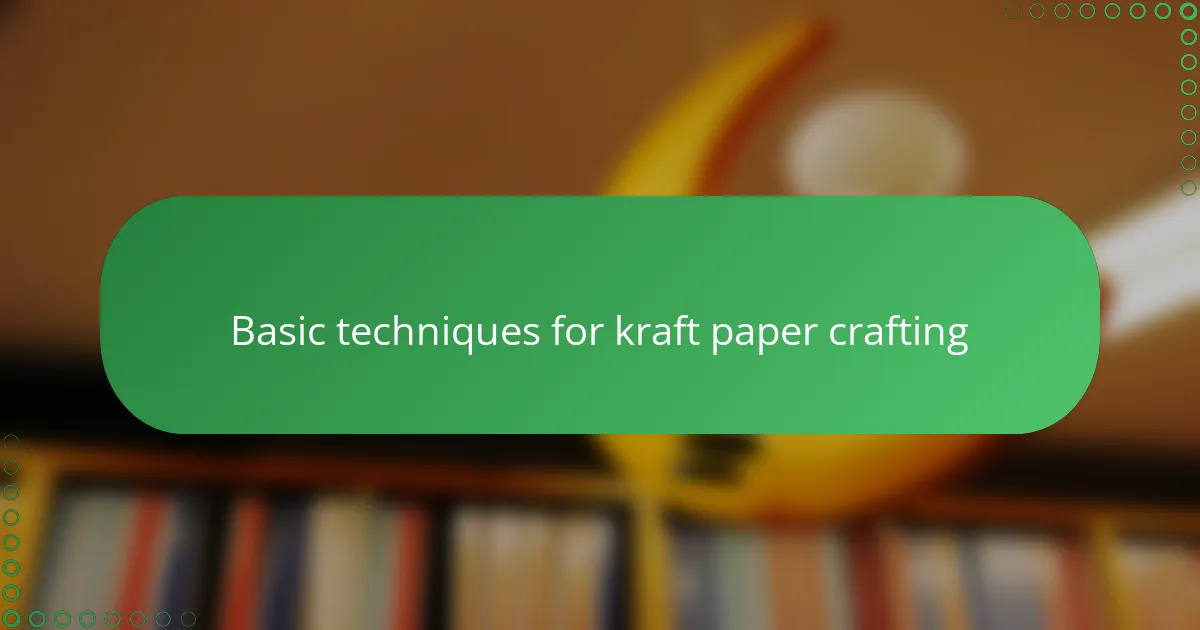
Basic techniques for kraft paper crafting
One technique that truly changed my crafting game with kraft paper is scoring before folding. At first, I tried folding without any preparation, and the results were always uneven, sometimes even cracking the paper. Once I started using a bone folder or the back of a butter knife to lightly score fold lines, my creases became crisp and professional, giving my projects a neat finish that I hadn’t managed before. Have you ever noticed how a simple score line can make folding feel almost effortless?
Another basic step I swear by is layering. Kraft paper’s natural thickness allows for creative stacking without making the craft too bulky. When I needed to make cards or gift tags, I layered shapes or stamped designs on multiple layers, securing them with double-sided tape. The contrast between the rustic base and the raised design added an unexpected depth, making the pieces feel handcrafted with real care. It’s amazing what a little layering can do to elevate a simple kraft paper project.
Finally, I learned early on that sealing kraft paper with a light coat of clear varnish or mod podge can protect the surface and add a lovely matte finish. I was skeptical at first, afraid the varnish would ruin the paper’s natural feel, but instead, it enhanced the texture and kept ink or paint from bleeding. Have you tried sealing your kraft creations? From my experience, it’s a small step that really preserves your hard work and keeps projects looking crisp over time.
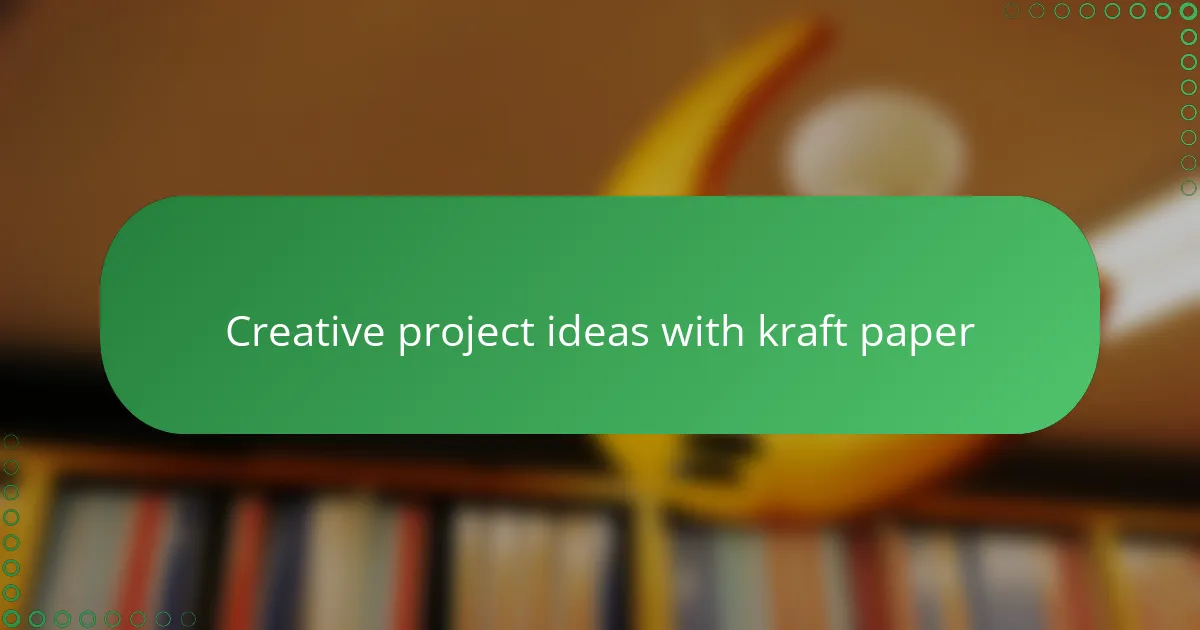
Creative project ideas with kraft paper
One of my favorite creative projects with kraft paper has to be making personalized gift wrap. The paper’s natural brown hue provides a perfect backdrop for hand-drawn doodles or stamped patterns. Have you ever tried stamping simple shapes with white or metallic ink? The contrast that pops against the kraft really adds a charming, rustic vibe that feels both thoughtful and unique.
I also discovered that kraft paper works wonders for crafting sturdy envelopes and tags. Early on, I made a batch of envelopes for holiday cards, cutting and folding the kraft with my trusty tools. The durability meant no worries about tearing in the mail, and each envelope felt like a small piece of art. There’s something satisfying about sending off a card that’s wrapped in handmade care, don’t you think?
For something a bit different, I experimented with 3D paper flowers using kraft sheets. At first, shaping the thick paper felt tricky, but the texture gave the petals a lovely, lifelike quality once I mastered curling the edges with scissors. These blooms added a warm, earthy touch to my home decor, reminding me that even simple materials can blossom into something extraordinary with a little patience and creativity. Have you tried turning kraft paper into something three-dimensional yet? It’s a rewarding challenge worth exploring.
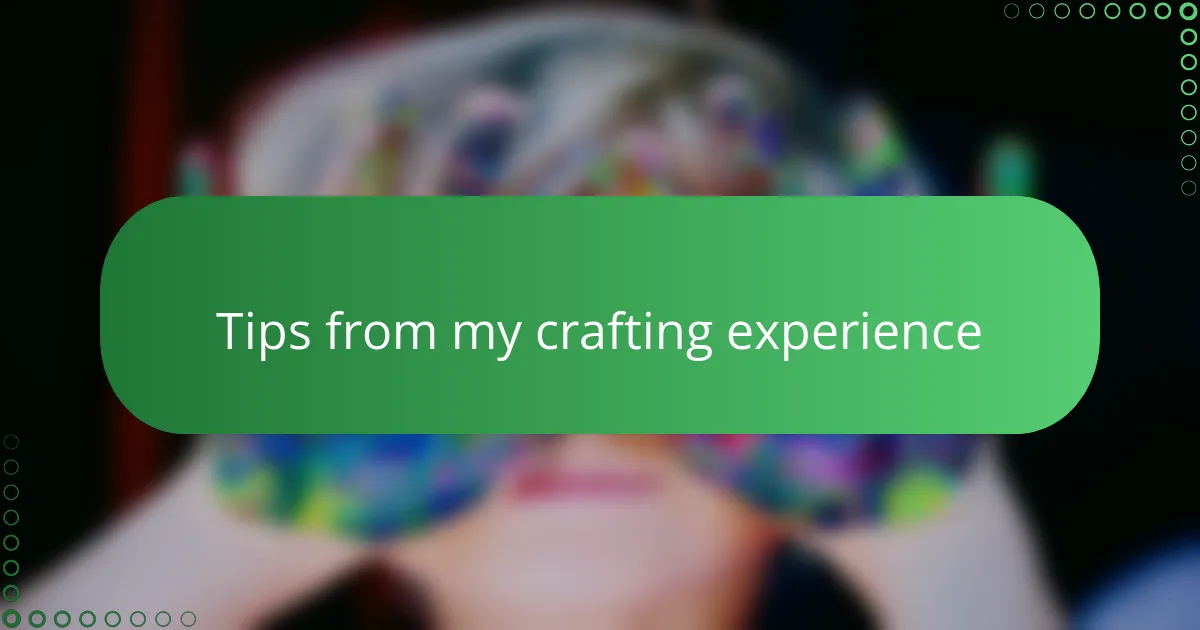
Tips from my crafting experience
One tip I always keep in mind is to handle kraft paper with a bit of patience. When I first rushed through cutting or folding, the paper sometimes resisted or creased oddly. Have you noticed how taking a moment to score fold lines or gently press down can completely change the outcome? It’s like giving the paper a chance to cooperate with your vision.
I also learned that choosing the right adhesive really saves a project from frustration. Early on, I underestimated how easily kraft paper absorbs glue, which made some of my pieces warp or wrinkle. Switching to a strong tacky glue was a game changer—it holds firm without messing up the paper’s surface. What’s your experience with adhesives? For me, this small adjustment made crafting more enjoyable and less stressful.
Finally, I can’t stress enough the value of embracing kraft paper’s natural texture instead of fighting it. At times, I tried adding too many layers or heavy embellishments, and it overwhelmed the rustic charm I loved. So now, I aim to highlight that earthy feel with simple designs or minimal accents. Isn’t it amazing how sometimes less really is more? This balance keeps each project feeling authentic and thoughtfully handmade.
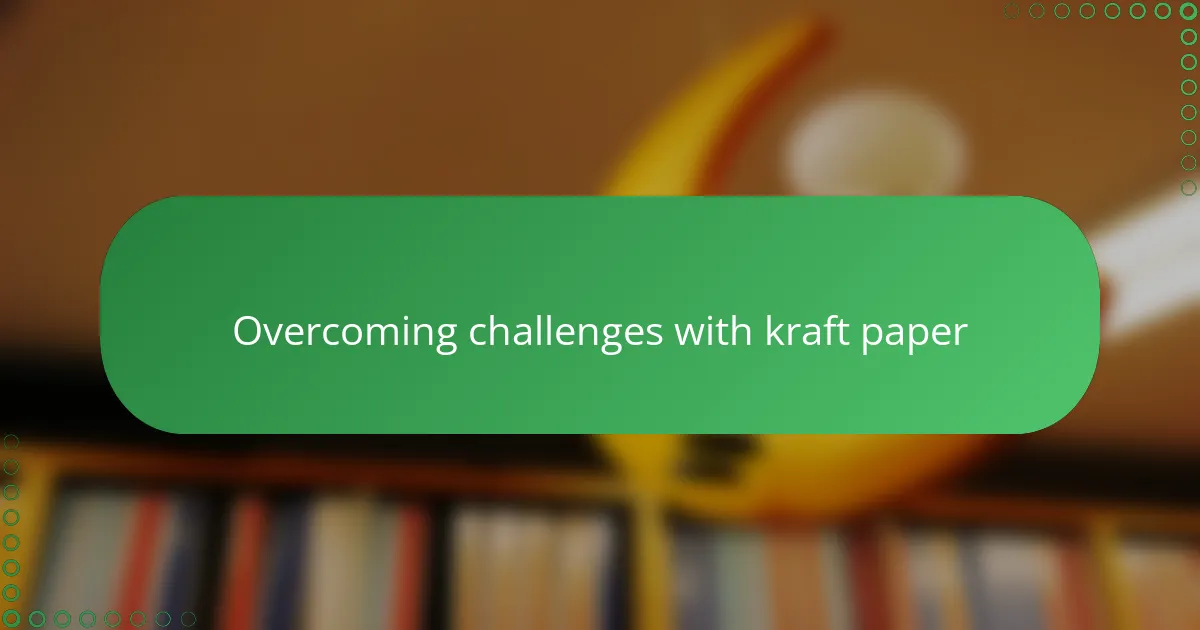
Overcoming challenges with kraft paper
Working with kraft paper hasn’t always been smooth sailing for me. At times, the thickness that makes it so sturdy also made folding and cutting a bit tricky—especially when I was eager to rush through. Have you ever felt that frustration when your paper just won’t bend the way you want? I found that slowing down and scoring fold lines gently changed everything, turning resistance into cooperation.
Adhesives were another challenge I had to tackle. Early on, I thought any glue would do, but kraft paper’s rough texture quickly showed me otherwise. I remember a project warped from too much moisture—I learned the hard way to pick tacky glue that grips firmly without soaking through. Have you struggled with glue ruining your work? Choosing the right adhesive really made my crafting sessions less stressful.
One surprising discovery was learning to respect kraft paper’s natural character instead of fighting it. Sometimes, I wanted to add so many layers and embellishments that the paper lost its simple, rustic charm. When I stepped back and embraced its earthy texture with minimal accents, my projects started to feel more authentic and fulfilling. Isn’t it amazing how accepting the material’s quirks can actually improve your creations?
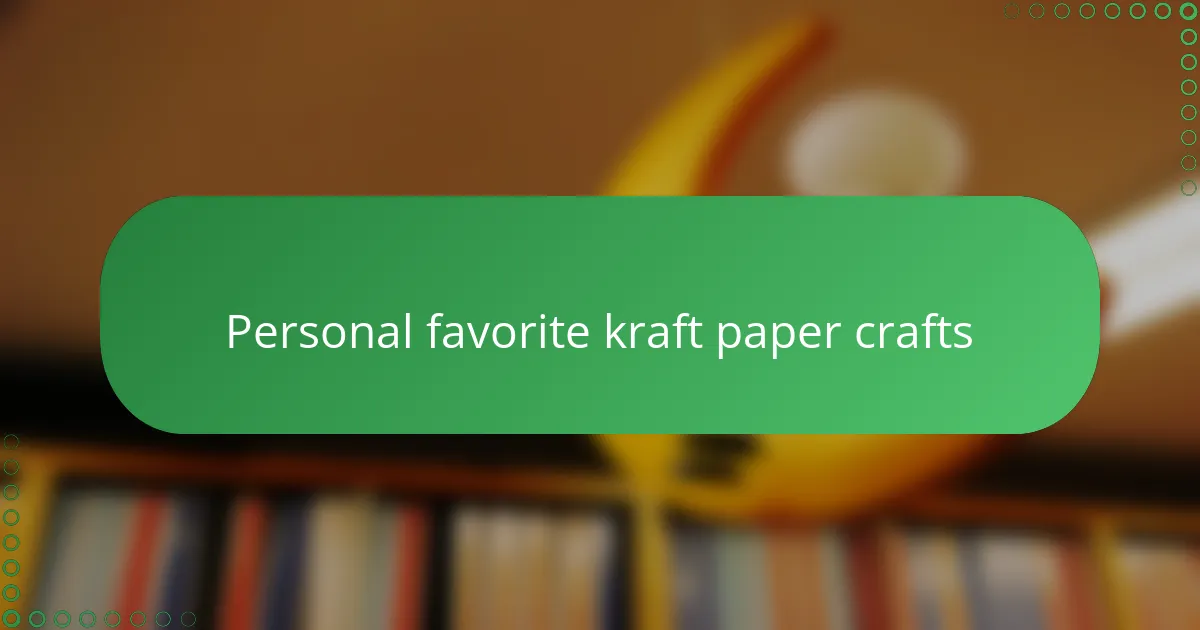
Personal favorite kraft paper crafts
Among all the kraft paper projects I’ve tried, hand-stamped gift tags quickly became my personal favorite. There’s something incredibly satisfying about watching simple shapes come alive with white or metallic ink against that brown backdrop. Have you ever felt that tiny spark of joy when a plain piece of paper suddenly feels thoughtful and unique? For me, those tags carry more than just messages—they hold a bit of my creativity with every stroke.
Another craft I cherish is making kraft paper envelopes. I still remember the first batch I crafted for holiday cards—cutting, folding, and gluing each envelope felt like wrapping my greetings in pure care. The sturdiness meant no fear of tearing in the mail, which was a relief, and the natural texture gave each one an understated charm. Don’t you think there’s a special pleasure in sending something so handcrafted and genuine?
Lately, I’ve been drawn to shaping 3D paper flowers from kraft sheets. At first, the thickness seemed like a challenge, but once I got the hang of curling the petals just right, the results were stunning. Those earthy, lifelike blooms bring a warmth to my home that no store-bought decor could match. Have you ever transformed something so simple into a little piece of art that feels alive? It’s that feeling I chase every time I pick up kraft paper.
